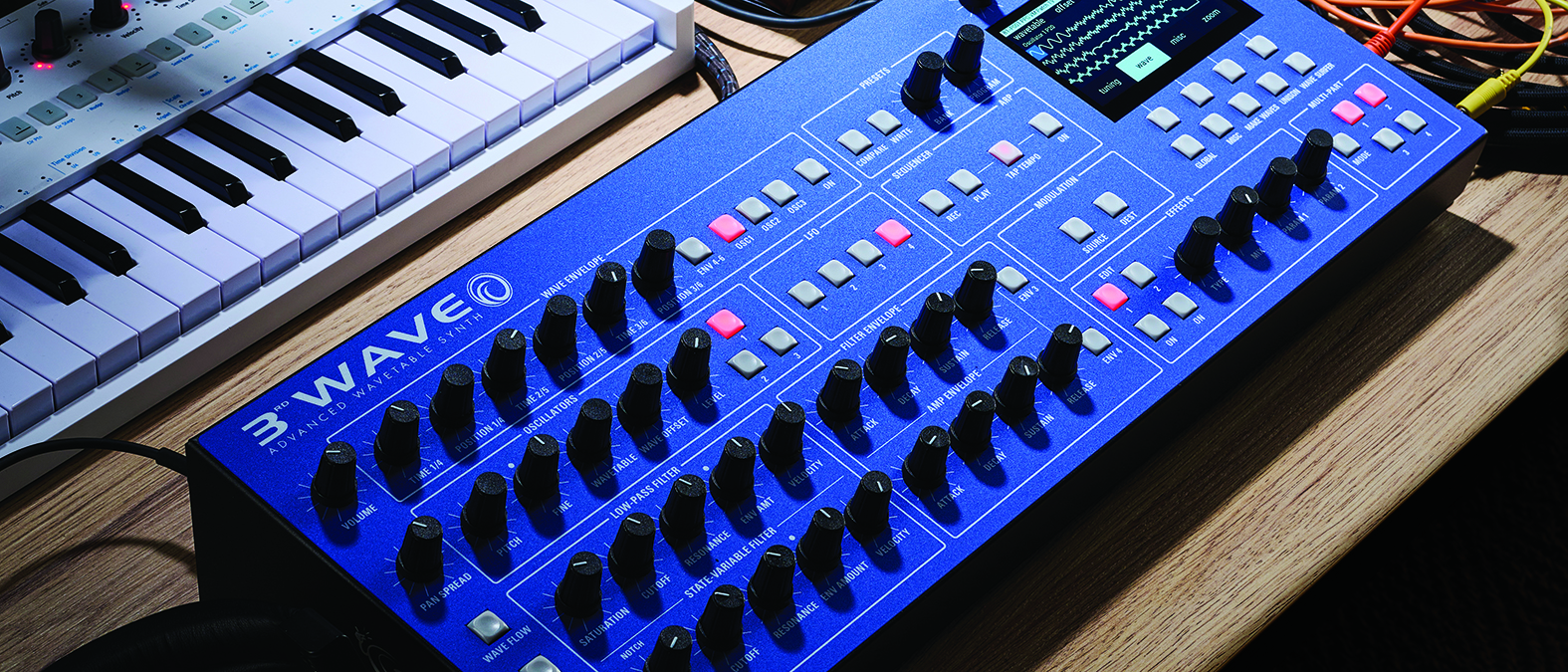MusicRadar Verdict
Simply one of the most powerful synths you could imagine, wrapped up in one of the easiest to use and most hands-on designs.
Pros
- +
Almost ridiculously easy to use given the level of power.
- +
Amazing old and new evolving sounds and a crazy number of modulation option.
- +
Multitimbral mode is excellent – it really is like having four synths in one.
Cons
- -
Expensive, although the module version is much cheaper.
MusicRadar's got your back
Groove Synthesis 3rd Wave: What is it?
The 3rd Wave is an homage to one of the most influential synthesizers of all time, the PPG Wave, developed by Wolfgang Palm back in the ’80s. In fact, it’s designed to be very much what that synth might have been had it reached v3 and was released now.
But in creating 3rd Wave, its developers, Groove Synthesis – a company containing some of the cream of the synth industry, including ex-Sequential developers – has created a digital/analogue hybrid synth that could be one of the finest releases of the 2020s. It’s not just one synth that continues the PPG legacy. It’s four, and does even more than that.

Groove Synthesis 3rd Wave: Performance and verdict
3rd Wave’s core is very much a wavetable engine based on the original PPG Wave, and even the design makes it clear where it takes its cues. But that’s only half the story. 3rd Wave includes two other main wavetable engines: a new set of 96kHz wavetables, plus a set of ‘analogue’ wavetables.
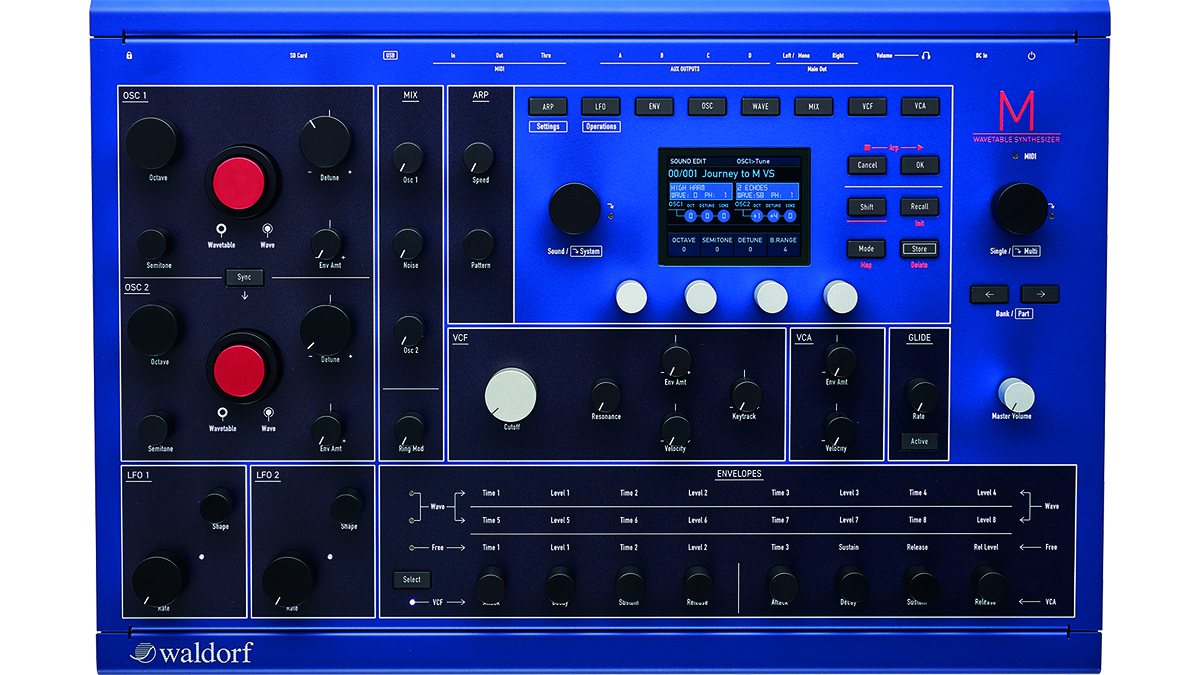
• Waldorf M
A similar marriage of wavetable and analogue and very much what Wolfgang Palm really did do next. It even boasts four-part multi-timbrality, but the voice count is limited to eight.
• Sequential Pro 3
A great hybrid monophonic/3-voice paraphonic synth with more emphasis on ‘analogue’ but with a dedicated wavetable oscillator nonetheless. It also has an arpeggiator, dual effects, and a sequencer.
• UDO Super 6
Hybrid synth but with more analogue aspirations than 3rd Wave, albeit with just 12 notes of polyphony. It features importable wavetables and shares other features including dual effects and an analogue architecture.
With all of this power, then, you effectively have three synths in one. But it gets better. With four parts of multi-timbrality and a quite exceptional 24 voices of polyphony, you can actually turn this monster synth into four very capable 6-voice polys, each with whatever engine you choose. Any advance on four synthesizers-in-one?
The rest of the synth’s operation follows a similar path to the original PPG, with its digital engine and analogue signal path plus sequencing. But there are many modern additions, obviously, including an arpeggiator, and a set of outputs and two effects for each of the four parts. Add in a lovely screen and an almost unreal ease of use, and this could be one of the great synths of our time.
Let’s get to the core of the synth first and those three main wavetable options generated by the three oscillators. The first is a set of 34 classic PPG-legacy ‘P’ wavetables, the second a set of 48 custom, high-resolution (96kHz) ‘U’ wavetables; and the third is a set of seven analogue-modelled ‘A’ waves. What these mean is that you essentially have the best of both the crunchy aliased original wavetable sounds from the PPG, modern hi-res wavetable options, and a high-quality subtractive VA synth thrown in.
Importantly, you can also import your own P and U wavetables into 14 and 16 spare slots respectively – or indeed overwrite any existing wavetables – all by way of 3rd Wave’s Wavemaker software. Back in the day, you’d have spent an age creating your own wavetables, but this utility uses machine learning to help create wavetables from whatever audio you either drag in (via a USB connection) or record in via the audio in. It takes a matter of seconds for the synth to create wavetables this way, and there are also options to load in those you have created elsewhere – the synth will detect Serum-created wavetables when they are imported, for example.
Want all the hottest music and gear news, reviews, deals, features and more, direct to your inbox? Sign up here.
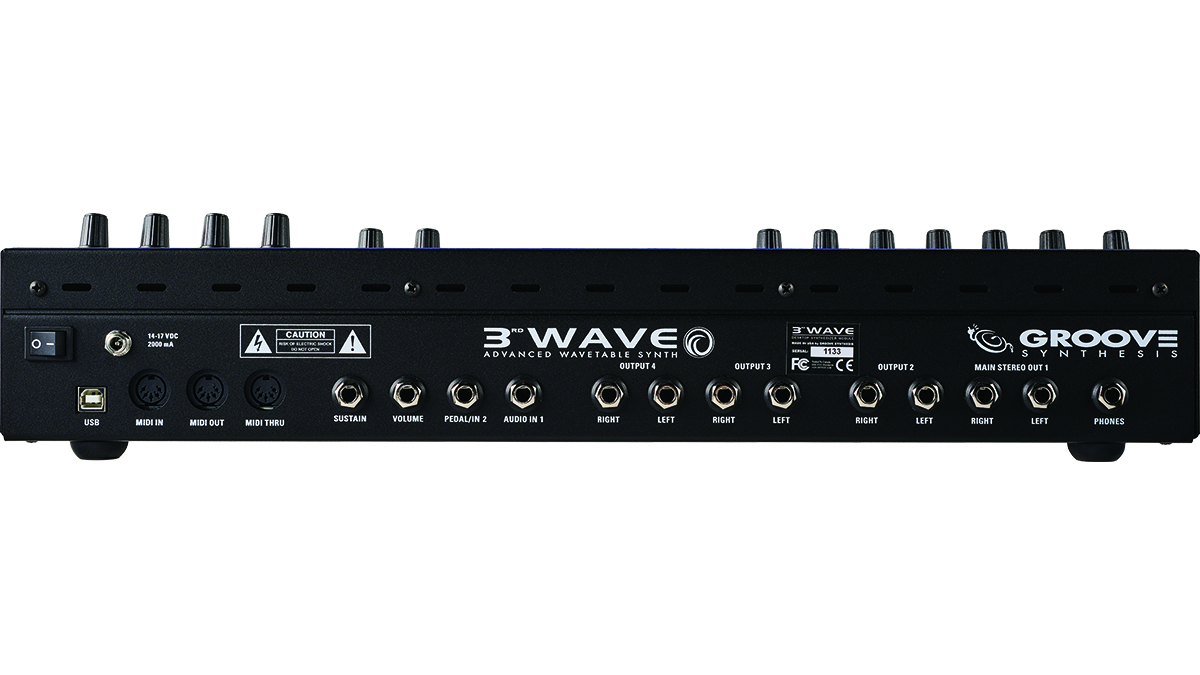
The next important feature is the Wave Envelope. Here you get movement going in your sounds, as the 6-stage envelope lets you sweep around the 64 waveshapes within a wavetable and specify exactly how and when you do it. If this isn’t switched on, the 3rd Wave oscillator just generates sound from a single cycle, but once on, you specify the time, range, position and more, so can determine how the wavetable is used for dynamic sound creation. There are also other Wavetable options available – see below for more detail – but the important detail here would be that there is a Wave Envelope available for each of the three oscillators, and tied in with those four multitimbral parts, that means that there is vast sonic potential.
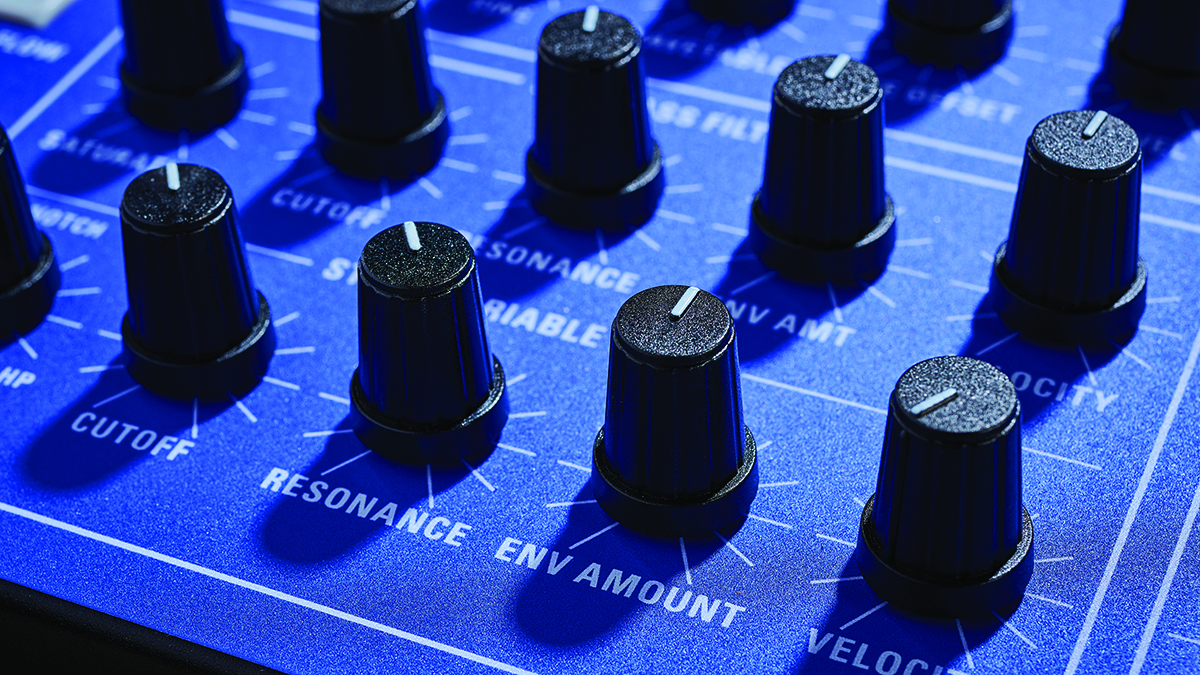
How it comes together
The real beauty, though, is how all of this power is managed. There’s almost a control per function, so press a button to select an oscillator, edit your envelope on the (amazing) screen with the dials around it, and use dedicated dials for your timing and position. Easy.
The oscillator section is just as straightforward to navigate. Select which of the three oscillators you want to change, and then dial through and choose from the 34 original PPG wavetables, 48 new wavetables (including Buchlas, Fairlights, ARPs and bells), or seven analogue waves (square, supersaw, noise etc) via rotaries and screen.
The multi-timbral area is just as well implemented. To work in this mode you simply bring in more parts by pressing buttons 1 to 4 – it really is that simple! Choose four parts, and each will have six notes of polyphony, as the maximum 24 notes of polyphony are spread between the parts – so choose two parts, and each has 12 notes, or three parts, and each has eight.
It really is like having up to four synthesizers under one very nice, blue bonnet
While working in a Multi Part, its button flashes red and you can select, say, its oscillator makeup. Do the same for the three other parts and it’s easy to set up four distinct sounds in no time. On top of that you also get a couple of effects to add per part so the sonic flexibility this gives you should not be understated. Play a huge single sound, layer up to four together, or trigger four different sounds each with its own MIDI channels – it’s entirely up to you, but it really is like having up to four synthesizers under one very nice, blue bonnet. And with a fully-fledged pattern sequencer onboard, with one sequence per Multi Part, you can quickly bring the whole synth alive, without a computer should you wish.
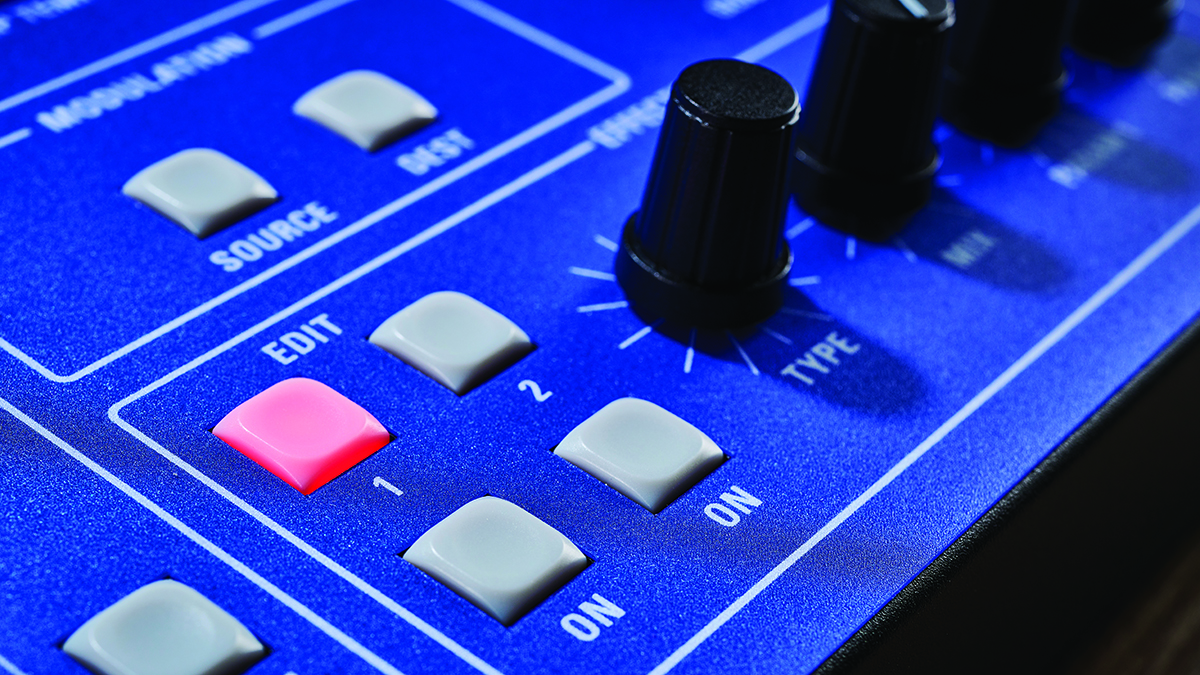
Modulation is excellent too, with at least a couple of fast ways to get some movement going with sounds – like there isn’t already enough. You can access one of the four LFOs, specifying frequency, amount, shape and destination on screen, or enter the Modulation Matrix and specify sources and destinations there, again using the various dials around the screen. There’s a little confusion here as the destination in the matrix can be different to the destination chosen directly within the LFO section – we’re guessing both are implemented as destinations – but otherwise, it’s just as straightforward to use as any other mode on the synth. In total you get 16 assignable slots, 12 additional fixed-source slots, 27 sources, and 114 destinations; that’s enough modulation power to fulfil any sound-design fantasy.
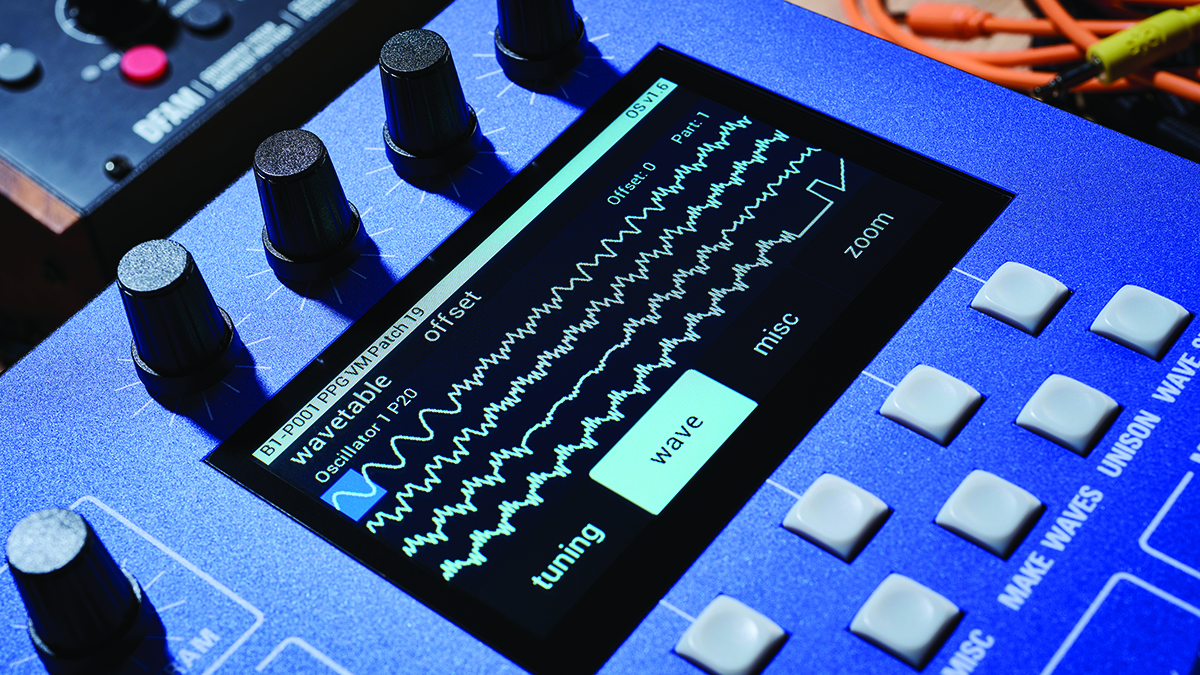
Wave Flow: PPG old or new, you decide
Wolfgang Palm launched PPG in the late ’70s – with a mission to move away from the constraints of the analogue oscillator by using single-cycle digital waveforms that could then be scanned as wavetables – and a new strand of synthesis was born that can be traced up to the Serums and Pigments of today.
3rd Wave is attempting to be the PPG of 2024, upping the specs from the final 1987 PPG2.3 model (which only had 8-voice polyphony, for example), but still features 34 classic wavetables based on the 8-bit wavetables from the PPG2.2 and 2.3. Groove Synthesis even went to the length of duplicating all the odd PPG features and processing right down to the very high playback rate and audible imaging, so you really can get a flavour of those machines.
However, it is a flavour you can dip in and out of thanks to the Wave Flow button, which is like the waveform interpolation found on modern wavetable synths, and smooths out the sweeping between the waveshapes in a wavetable. With it switched off, you get more of the audible stepping between waveshapes, something the original PPG was known for. Another addition is Waveform Smoothing, which irons out pitching issues between notes that the original PPG had.
Basically, then, if you want that PPG sound, you switch these modern options off to get that machine’s idiosyncrasies.
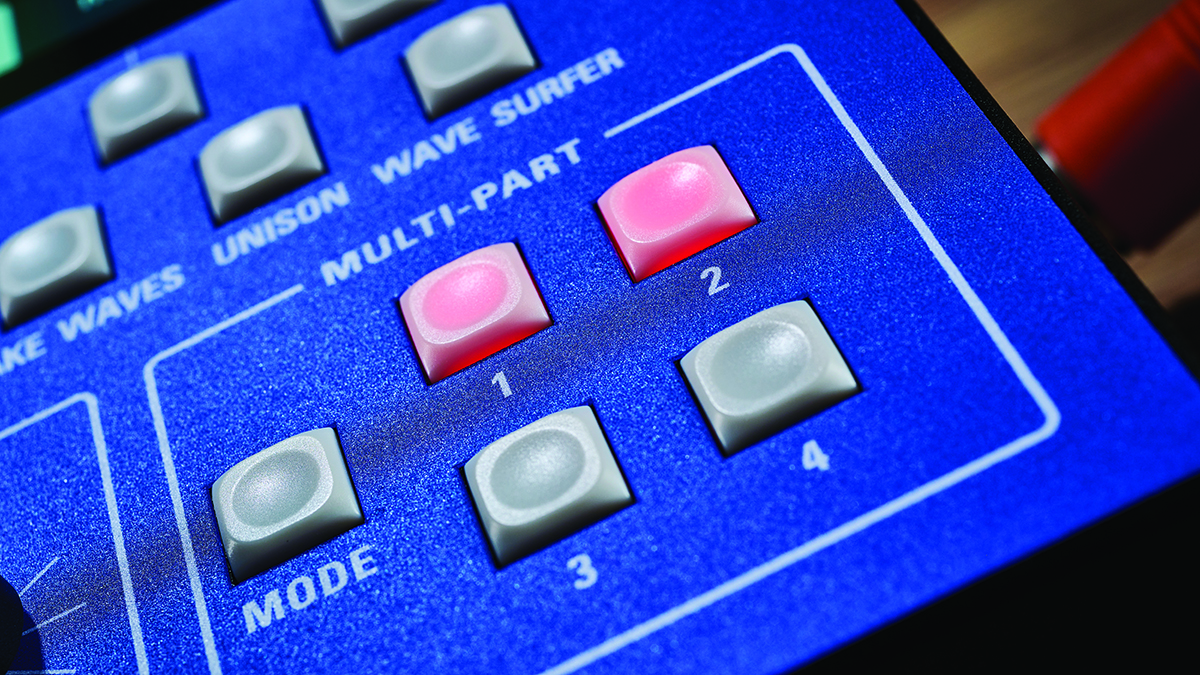
How does it sound?
This is the hard bit to convey. You might think that with the concept of the synth being ‘PPG v3’, there might be too many hard and crunchy digital sounds. But while there can be, this is very much a 2024 wavetable synth, with VA aspirations. So there are plenty of sounds with incredible movement, crunchiness if you want it, but enough smoothing available under the Wave Smoothing control to keep everything clean and in check.
Sounds are pristine, evolving, incredibly dynamic and very analogue on occasion – and it’s easy to get more dirt going by way of the modulation. We thought the 303 sound (G Acid Arp) was a bit too polite, for example, but a couple of filter assignments and 10 seconds later, we’d turned it into the filthiest acid line this side of the ’90s.
But the biggest takeaway is the size of the sounds. As you dial through the presets, they might well have been programmed with up to four Multi Parts each, meaning they’re already huge and evolving. But use all that polyphony, and you’re talking about immense sonic capabilities. This synth doesn’t just take over an entire mix, it could easily be an entire mix.
3rd Wave not only sounds incredible, but it’s an unexpectedly joyous synth to use. With ex-Sequential designers in the Groove mix, we should have expected an easy workflow, but the interaction between the screen and hands-on controls is almost too good to be true. As is the marriage of digital and analogue; never has a synth felt so perfectly hybrid, from the core wavetables that straddle old, new, analogue and digital, right the way through to the rest of the analogue (and digital!) signal path, the 3rd Wave feels in many regards like the ‘ultimate’ of synths.
And it might well come at a price to match, but if you consider it as four synths, each with its own outputs, effects and six voices of polyphony, then even that hurdle starts to melt away… just a little. And even better news is that this desktop module version – with all the power of the keyboard – is retailing for up to £1,500 less than the keyboard, making it almost feel like a bargain! Whichever you opt for, 3rd Wave is a simply stunning debut.
MusicRadar verdict: Simply one of the most powerful synths you could imagine, wrapped up in one of the easiest to use and most hands-on designs.
Groove Synthesis 3rd Wave: The web says
"The 3rd Wave scores top marks on every single aspect by which I can judge it. The only elephant in the room is the high price, but considering the no‑compromise approach that Groove Synthesis have taken, I can’t fault it for being expensive."
Sound On Sound
Groove Synthesis 3rd Wave: Hands-on demos
Groove Synthesis
loopop

Tim Shoebridge
Matt Johnson Jamiroquai
Groove Synthesis 3rd Wave: Specifications
- KEY FEATURES: 24-voice wavetable synth, 4-part multi-timbral, three oscillators per voice and two digital effects per part; available as a desktop module or 61-note semi-weighted keyboard with velocity and aftertouch.
- Three sets of wavetables: 34 classic + 14 user, 48 modern +16 user, 7 analogue; analogue LP filter plus SEM-style state-variable filter; 500 user and factory programs.
- Sequencer: 24 patterns, 32 measures; 4 envelopes; 4 LFOs.
- I/O: 8 1/4-inch jack outputs; headphone out; Sustain, Volume, Pedal 2 and Audio in; MIDI in/out/thru, USB (for MIDI).
- CONTACT: Groove Synthesis
Andy has been writing about music production and technology for 30 years having started out on Music Technology magazine back in 1992. He has edited the magazines Future Music, Keyboard Review, MusicTech and Computer Music, which he helped launch back in 1998. He owns way too many synthesizers.
